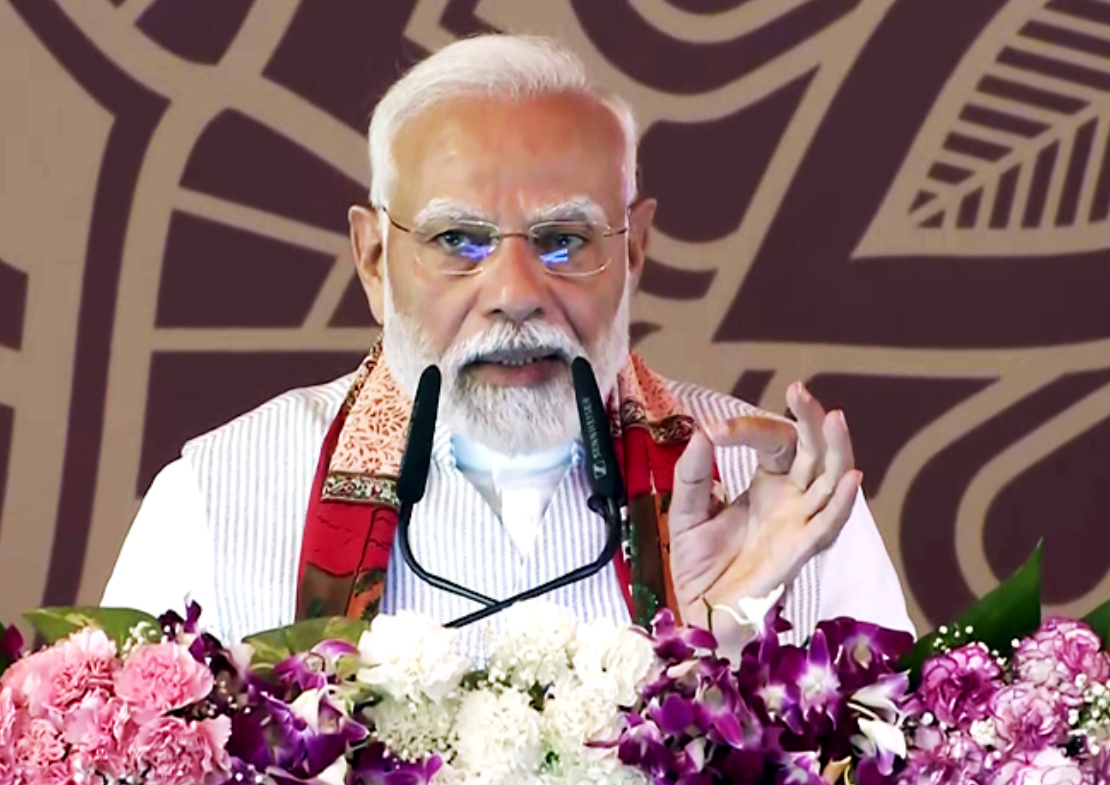After President Trump imposed a 25% tariff on Indian exports, Prime Minister Modi responded with a strong call to buy Swadeshi products, reviving the “Make in India” push. Amid strained US-India trade ties, Modi urged citizens to support local industries, farmers, and MSMEs. With 87% of exports at risk and penalties linked to Russia ties, can India scale up domestic manufacturing fast enough to offset the economic impact?
Modi’s Swadeshi Call After Trump’s 25% Tariff
As the global economic landscape shifts dramatically, Indian Prime Minister Narendra Modi has launched a renewed call for economic nationalism in response to an aggressive trade move by the United States. Speaking at a rally in Varanasi on August 3, 2025, Modi urged citizens to prioritize locally made products—Swadeshi goods—as a shield against escalating global trade disruptions. His message came just days after U.S. President Donald Trump signed an executive order imposing a 25% tariff on Indian exports, effective August 7, alongside an unspecified penalty tied to India’s continued trade ties with Russia.
This development marks a critical juncture in India-U.S. relations, and Modi’s response signals a strategic shift to domestic resilience through the “Make in India” and “Vocal for Local” campaigns.
A Strategic Swadeshi Revival
Modi’s Varanasi speech was not just a political appeal—it was a national call to action. With festival and wedding seasons approaching, the Prime Minister emphasized the importance of buying goods “made by the sweat of an Indian,” linking economic behavior with patriotism. This Swadeshi revival aligns closely with the broader objectives of the “Make in India” campaign, designed to stimulate domestic manufacturing, safeguard youth employment, and protect India’s farmers and small industries.
“If we want India to be the third-largest economy, every citizen must awaken the spirit of Swadeshi,” Modi declared, positioning the movement not only as a response to international pressure but as a cornerstone of India’s long-term growth trajectory.
Impact of Trump’s Tariffs: Trade and Tensions
The 25% tariff, effective August 7, comes at a time when India and the U.S. are struggling to finalize a long-awaited trade agreement. India’s exports to the U.S. totaled $66 billion in 2024, forming a major chunk of the $129.2 billion bilateral trade volume. Trump’s move threatens to impact approximately 87% of these exports—particularly from labor-intensive sectors like textiles, pharmaceuticals, automotive components, and electronics.

Additionally, India’s $45.7 billion trade surplus with the U.S. in 2024 has become a focal point of criticism in Washington. Trump’s administration has long voiced frustration over India’s average import tariffs of 17%, especially on agriculture and dairy—two sectors that have consistently been dealbreakers during negotiations.
Five rounds of talks since February 2025 yielded no breakthrough, with U.S. officials claiming India remained rigid on its market access terms. The sudden imposition of tariffs is widely seen as Washington’s response to these failed talks and India’s persistent energy and defense purchases from Russia
Geopolitical Undercurrents: The Russia Factor
While Trump’s official justification includes trade imbalances, the timing and framing of the penalty suggest a deeper geopolitical undertone. India’s procurement of Russian crude oil and military hardware has drawn criticism from Washington, particularly amid the ongoing Russia-Ukraine conflict. U.S. officials have questioned India’s neutrality, even as New Delhi argues that such purchases are essential to securing affordable energy for its population and maintaining strategic autonomy.
Modi, without naming Trump directly, hinted at this pressure during his Varanasi address: “India will always prioritize national interest. We will stand with our farmers, our industries, and our sovereignty.”
Public Sentiment and Economic Fears
On-ground reactions to the tariff decision reflect a complex mix of support and skepticism. Many citizens have welcomed Modi’s Swadeshi appeal as a timely measure to support micro, small, and medium enterprises (MSMEs). Local business owners and consumers have expressed enthusiasm for the campaign, viewing it as a way to boost domestic industries and reduce dependence on volatile global trade ties.
However, concerns remain about India’s ability to scale up production quickly enough to replace high-value imports or absorb the impact of declining exports. Export-driven sectors like textiles and chemicals have already started feeling the pinch. Following the tariff announcement, Indian equity markets saw an immediate drop, with the BSE Sensex falling 1.5%, led by losses in export-heavy stocks.
Industry leaders have flagged that while speeches and slogans boost morale, they must be supported by concrete policy actions and fiscal incentives to truly transform the manufacturing landscape. There is also uncertainty about how quickly alternative supply chains can be established, particularly in high-tech sectors where India remains import-reliant.
Temporary Relief and Long-Term Challenges
There is some short-term relief for Indian exporters. According to customs guidelines, consignments shipped before August 7 and arriving in the U.S. by October 5 are exempt from the new tariffs—except for steel and aluminum, which now attract a steep 50% duty. This grace period offers exporters a brief window to adjust, but experts warn that the structural challenges facing Indian industry remain unresolved.
Traders and shopkeepers across the country have been urged to stock and promote Swadeshi products. This directive, if widely implemented, could significantly benefit domestic manufacturers, especially in sectors like handicrafts, agro-products, and homegrown consumer goods. Yet, a full transition toward import substitution requires strategic investments in infrastructure, skills, and technology.
Can Swadeshi Shield India’s Economy?
Modi’s renewed call for Swadeshi is a bold economic and political statement at a time of global uncertainty. While it resonates with the public and reinforces national pride, the challenges ahead are formidable. Scaling up manufacturing, countering export losses, and navigating complex trade negotiations with global powers like the U.S. require more than slogans—they demand systemic reform and unwavering execution.
As India aspires to become the world’s third-largest economy, the battle to protect and empower domestic industries has become a defining test for the Modi administration. Whether the Swadeshi movement can evolve from rhetoric into real economic resilience will depend on the country’s ability to innovate, invest, and stay united in the face of international headwinds.
Disclaimer: This article is based on verified government statements, recent developments, and public commentary surrounding India-U.S. trade relations as of August 3, 2025. The views presented aim to provide a comprehensive understanding of ongoing economic shifts and are not investment or political advice.

